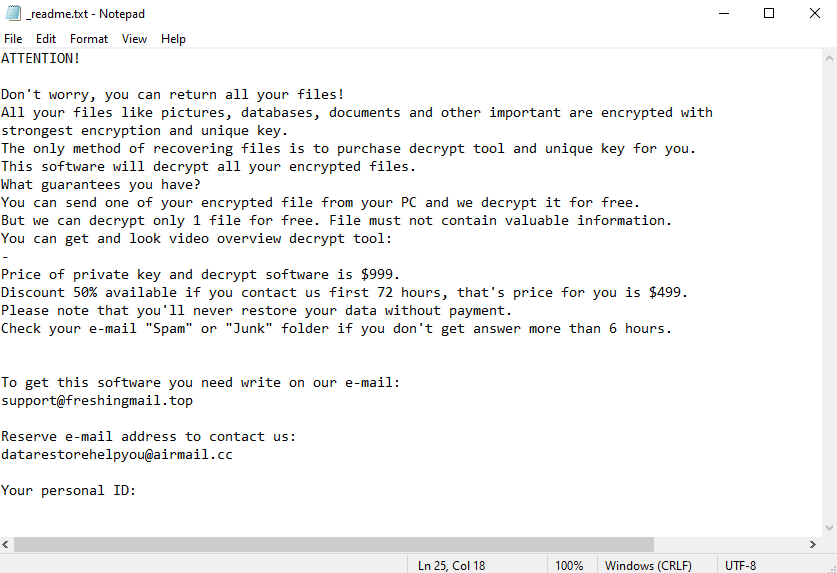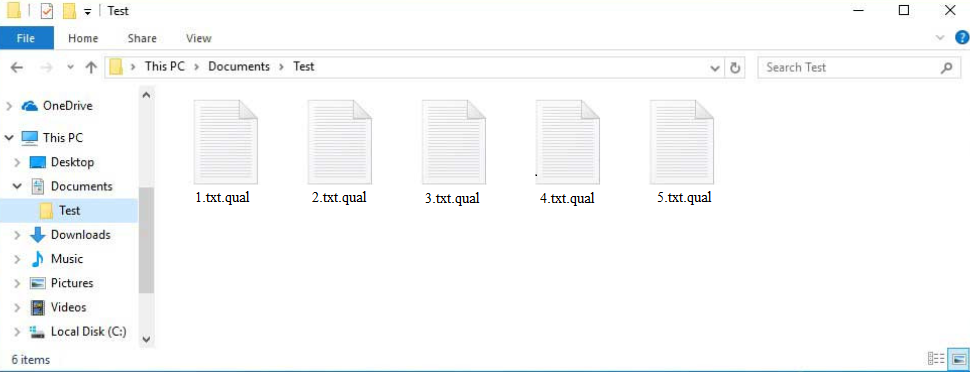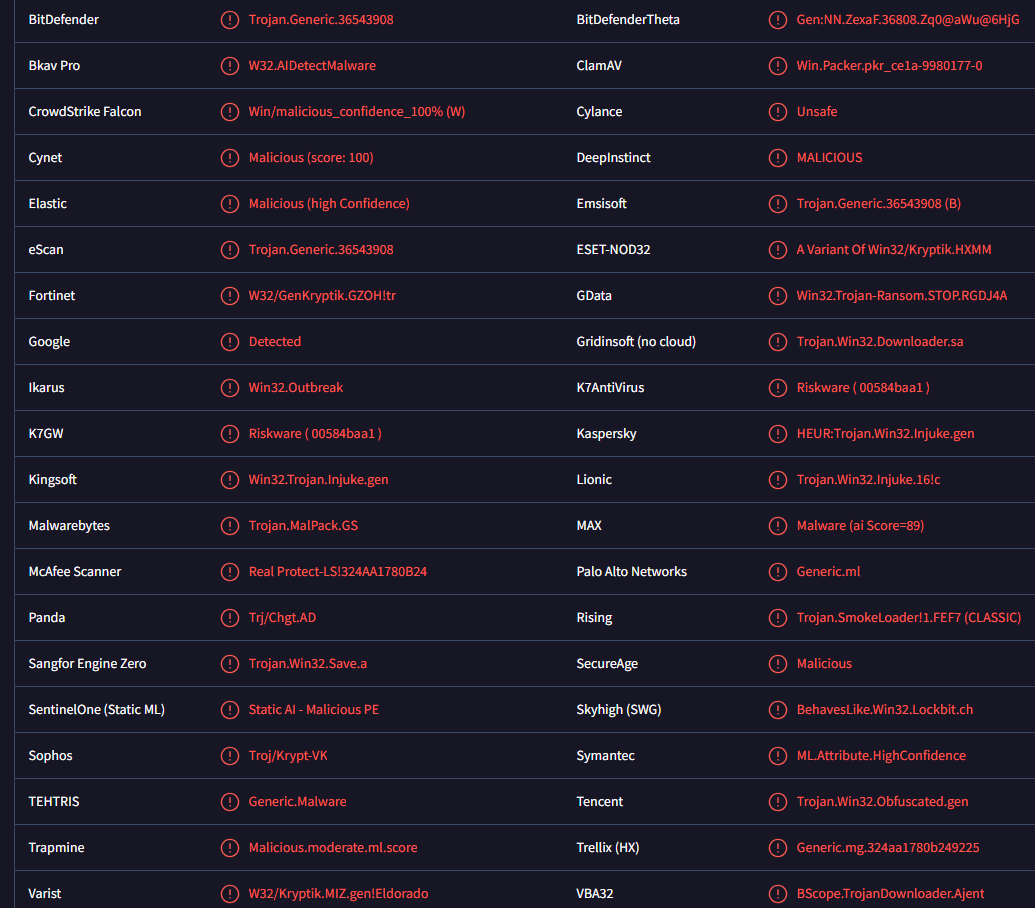How to remove Qual ransomware
Qual ransomware is file-encrypting malware from the Djvu/STOP ransomware family. The .qual extension added to encrypted file names can identify the ransomware. Unfortunately, the ransomware will encrypt all personal files and request a payment to recover them. At the moment, only users who have backups can recover files for free.
Qual ransomware belongs to the Djvu malware family. The malicious actors operating these infections release new versions regularly, with hundreds of versions already released. The versions are seemingly identical but can be identified by the extensions they add to encrypted files. This particular malware adds .qual. For example, an encrypted 1.txt file would become 1.txt.qual.
The ransomware will encrypt all personal files, including photos, pictures, videos, documents, etc. You will not be able to open any of the files that have this extension unless you first use a decryptor. However, acquiring the decryptor is not easy.
When the ransomware is done encrypting files it will drop a _readme.txt ransom note in all folders that have encrypted files. The note is the same one dropped by all other Djvu/STOP versions. It contains instructions on how to acquire a decryptor, and it involves paying $999 in ransom. The note mentions a 50% discount for users who make contact within the first 72 hours but whether that is valid is uncertain. The malware operators also offer to decrypt one file for free as long as it does not contain important information.
Here is the full _readme.txt ransom note:
ATTENTION!
Don’t worry, you can return all your files!
All your files like pictures, databases, documents and other important are encrypted with strongest encryption and unique key.
The only method of recovering files is to purchase decrypt tool and unique key for you.
This software will decrypt all your encrypted files.
What guarantees you have?
You can send one of your encrypted file from your PC and we decrypt it for free.
But we can decrypt only 1 file for free. File must not contain valuable information.
Do not ask assistants from youtube and recovery data sites for help in recovering your data.
They can use your free decryption quota and scam you.
Our contact is emails in this text document only.
You can get and look video overview decrypt tool.
Price of private key and decrypt software is $999.
Discount 50% available if you contact us first 72 hours, that’s price for you is $499.
Please note that you’ll never restore your data without payment.
Check your e-mail “Spam” or “Junk” folder if you don’t get answer more than 6 hours.To get this software you need write on our e-mail:
support@freshingmail.topReserve e-mail address to contact us:
datarestorehelpyou@airmail.ccYour personal ID:
If you have no backup, paying the ransom may seem like a good option but we must caution you to not engage with the cybercriminals. Even if you pay, there are no guarantees that a decryptor will be sent to you. You are dealing with cyber criminals, and there is nothing to force them to send you the decryptor. Unfortunately, many victims have not received decryptors in the past. Furthermore, ransomware will continue to thrive as long as victims pay the ransom. The money victims pay also goes towards future criminal activities.
If you have a backup, you can start recovering your files as soon as you remove Qual ransomware from your computer. We strongly recommend using an anti-malware program to delete Qual ransomware because it’s a complex infection. Once the anti-malware program no longer detects Qual ransomware, you can safely connect to your backup.
If a backup is not available, your only option is to wait for a free Qual ransomware decryptor to be released. It’s not guaranteed that it will be released but it’s still a good idea to back up encrypted files and occasionally check for a free Qual ransomware decryptor. NoMoreRansom is a good source for decryptors. If you cannot find it on NoMoreRansom, it’s unlikely to be available anywhere else.
How is ransomware distributed?
Malware is often distributed through emails. Malicious actors try to make their malicious emails resemble ones sent by legitimate companies to their customers. For example, malicious emails may be made to look like parcel delivery notifications or order confirmations. Senders claim that the file attachments are important documents that need to be reviewed urgently, which can alarm users enough to open them. Once the malicious files are opened, the malware can begin its malicious activities. However, in most cases, generic malicious emails are not difficult to recognize. The most noticeable signs are grammar and spelling mistakes in emails that are supposed to be sent by legitimate senders. For whatever reason, malicious emails are often full of such obvious mistakes.
You should also always take note of how an email addresses you. If you are addressed as User, Member, Customer, etc., instead of your name by a sender whose services you use, that should be suspicious. Companies generally use customers’ names when contacting them to make the emails seem more personal. Malicious actors target many users with the same email so they use generic words to address users.
It should also be mentioned that when users are targeted in individual attacks, the methods will be much more sophisticated. Malicious emails would be mistake-free, contain information that would give the email credibility, and just generally seem more legitimate. This is why users always need to be cautious with emails that have attachments. It’s recommended to scan all unsolicited email attachments with anti-virus software or VirusTotal before opening them.
Malicious infections are also prevalent on torrent websites because those sites are poorly moderated. It’s especially common to find malware in torrents for entertainment content, such as movies, TV series, video games, etc. If you use torrents to download copyrighted content, you’re not only stealing content but also putting your computer/data in danger.
How to remove Qual ransomware
Using an anti-malware program is necessary to remove Qual ransomware. If you attempt to delete Qual ransomware manually, you could end up causing more damage to your device. Once the ransomware has been fully removed, you can connect your backup and start recovering files.
Qual ransomware is also detected as:
- Trojan.MalPack.GS by Malwarebytes
- A Variant Of Win32/Kryptik.HXMM by ESET
- HEUR:Trojan.Win32.Injuke.gen by Kaspersky
- Trojan.Generic.36543908 by BitDefender
Site Disclaimer
WiperSoft.com is not sponsored, affiliated, linked to or owned by malware developers or distributors that are referred to in this article. The article does NOT endorse or promote malicious programs. The intention behind it is to present useful information that will help users to detect and eliminate malware from their computer by using WiperSoft and/or the manual removal guide.
The article should only be used for educational purposes. If you follow the instructions provided in the article, you agree to be bound by this disclaimer. We do not guarantee that the article will aid you in completely removing the malware from your PC. Malicious programs are constantly developing, which is why it is not always easy or possible to clean the computer by using only the manual removal guide.



